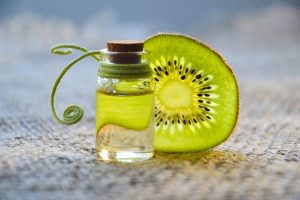The Best Criteria For Choosing a Disinfectant
The most effective criteria for selecting a Disinfectant
When choosing a disinfectant wipe, the most important factor is its capability to eliminate pathogens. They are vital in healthcare and hospitals as they stop the spread of illness and outbreaks. They should not be utilized in environments that are fast-paced, as staff may not be able to keep the surfaces clear. The most effective disinfectant for environments with high-speed traffic should be able to last longer for pathogens.

When choosing the best chemical disinfectant for your needs, you must first determine the dimensions of the area that needs that needs to be disinfected. For small areas, ready-to-use products are recommended. However, for large-scale facilities they could be expensive particularly when applied to larger surfaces. The time of the kill should be more than the amount of time that product is allowed to remain wet. The best way to determine this is to check the duration of contact with water in the product. If this is less than half the EPA suggested kill time, the product is not working.
Disinfectant may kill pathogenic bacteria
A proper disinfectant solution should eliminate all pathogens that are present on a surface. These bacteria are not yet examined, so it is not possible to utilize the List N disinfectant for porous surfaces. A good disinfectant is capable of killing all kinds of viruses and bacteria. This is especially important if the disinfectant will be employed for a prolonged period of time.
Be aware of the surfaces the disinfectant is going to be used on prior to deciding on a product. Check these COVID 19 cleaning service. It shouldn’t harm specific materials, especially those in high-traffic areas. It shouldn’t cause harm to the surface using chlorine or corrosion faucets. If a cleaner is used on kitchen countertops, it should not be odorless. Green-certified disinfectants are green-friendly and non-toxic.
Do disinfectants and cleaning products pose a risk? harmful?
A disinfectant shouldn’t have negative effects on health care surfaces. It should be safe for contact with humans and in compliance with the PPE guidelines. There are two levels to the toxicity which can cause skin irritation to the surfaces of the building is classified as hazardous. The most toxic is considered a danger. The lowest level of flammability is considered to be the safest. If you are a health practitioner, a caution or warning is recommended.
The best disinfectant should be safe for animals and human beings, and also be effective against SARS CoV-2. Averting the spread of biohazardous materials like COVID-19, fungi, and mold is a great idea. The most effective disinfectant needs to be stable even in the presence of these substances. It should be non-toxic to the environment and people suffering from allergies.
What is the most frequently used disinfectant?
There are many disinfectants in the market.Get details here www.pediatricdt.com/pdt-covid-response.php . Some disinfectants are only effective against vegetative organisms whereas others can be used against bacteria, viruses, and fungi. They must be certified for their activity against all types of pathogens within a facility. If not and they are not certified, they should be regarded as safe. Choose an anti-scoricidal sporicidal that will be effective against all strains of SARS coronavirus-2.
The needs of the pharmaceutical company will determine the best disinfectant for hospital use. Also, it must be safe for the environment. It must be effective across all applications. It must be effective against lipid-enveloped virus as well as plant cell culture. It should not pose a risk to humans. The presence of the drug is an important aspect in determining the safety of the pharmaceutical industry.
The most effective liquid disinfectant should have the ability to destroy the majority of bacteria and fungi. In addition to the spores that it kills, it is expected to destroy the majority of the bacteria and viruses in surfaces. This will stop the spread of infections. Additionally, it can decrease the risk of infection to zero. It is recommended for all types of surfaces used in homes, including those employed by healthcare professionals. It also helps to prevent the spread of diseases and contamination of bacterial species.



